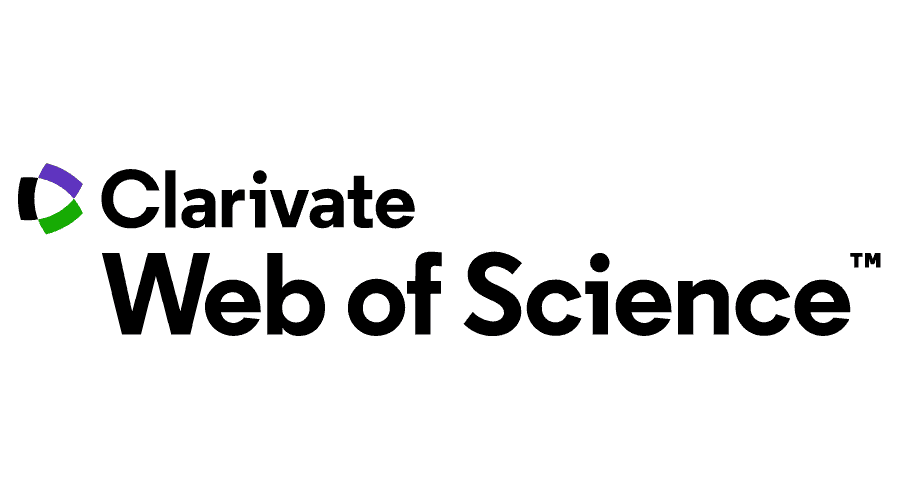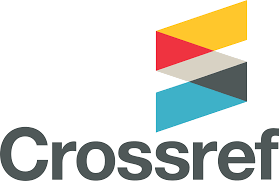Abstract
Research Aims: This research aims to discover work events that influence employees’ emotional states to construct a more comprehensive Kansei-based work events scale.
Design/Methodology/Approach: A mixed-method approach was adopted by combining qualitative and quantitative techniques in an Exploratory Sequential Design.
Research Findings: In study 1, the Kawakita Jiro (KJ) method (i.e., focus group study) (N = 28) identified four (4) categories of work events (i.e., interpersonal, task-related, organisational policies, and infrastructure and facilities). A new category, career development, was also discovered through this qualitative inquiry. Study 2 (N = 152) and Study 3 (N = 537), which used a quantitative approach, demonstrated that negative and positive emotional experiences are strongly linked to interpersonal and task-related events. This result further indicates that the scale is reliable for measuring emotional experiences at work.
Theoretical Contribution/Originality: The study captured micro and macro work events using the Kansei Engineering approach, allowing for a better understanding of emotional experiences at work.
Managerial Implication in the South East Asian Context: Strategies to promote positive events and prevent negative ones through routine practices and long-term plans relevant to the South East Asian context are discussed and presented in this paper.
Research Limitation & Implications: Some limitations should be considered, such as cross-sectional design, lack of investigation on other Affective Events Theory (AET) factors, and the focus on non-academic staff from public universities. Future research could expand upon this study by using a longitudinal design, a diverse sample, and additional AET factors.
References
Andel, S., Pindek, S., & Arvan, M. L. (2022). Bored, angry, and overqualified? The high-and low-intensity pathways linking perceived overqualification to behavioural outcomes. European Journal of Work and Organisational Psychology, 31(1), 47-60.
Ashton-James, C. E., & Ashkanasy, N. M. (2005). What lies beneath? A process analysis of affective events theory. In The effect of affect in organizational settings (Vol. 1, 23-46). Bingley: Emerald Group Publishing Limited.
Awang, P. (2015). SEM made simple: A gentle approach to learning Structural Equation Modeling. Bangi: MPWS Rich Publication.
Basch, J., & Fisher, C. D. (1998). Affective events-emotions matrix: A classification of work events and associated emotions (pp. 1-20). Gold Coast, Queensland: Bond University.
Butlewski, M. (2020). Well-Being Through Design for Dynamic Diversity: The Voice of Minorities in Design for All. In Advances in Social and Occupational Ergonomics: Proceedings of the AHFE 2019 International Conference on Social and Occupational Ergonomics, July 24-28, 2019, Washington DC, USA 10 (pp. 49-56). New York City: Springer International Publishing.
Casper, A., Tremmel, S., & Sonnentag, S. (2019). The power of affect: A three‐wave panel study on reciprocal relationships between work events and affect at work. Journal of Occupational and Organisational Psychology, 92(2), 436-460.
Chen, C., Guan, Z., Sun, L., Zhou, T., & Guan, R. (2022). COVID‐19 exposure, pandemic‐related appraisals, coping strategies, and psychological symptoms among the frontline medical staff and gender differences in coping processes. Applied Cognitive Psychology, 36(1), 111-120.
Chin, R. W. A., Chua, Y. Y., Chu, M. N., Mahadi, N. F., Wong, M. S., Yusoff, M. S., & Lee, Y. Y. (2018). Investigating validity evidence of the Malay translation of the Copenhagen Burnout Inventory. Journal of Taibah University Medical Sciences, 13(1), 1-9.
Creswell, J. W., & Plano Clark, V. L. (2018). Designing and conducting mixed methods research (3rd ed.). Thousand Oaks, CA: Sage.
Demerouti, E., & Cropanzano, R. (2017). The buffering role of sportsmanship on the effects of daily negative events. European Journal of Work and Organisational Psychology, 26(2), 263-274.
Frijda, N. H. (1993). Moods, emotion episodes, and emotions. In M. Lewis & J. M. Haviland (Eds.), Handbook of emotions (pp. 381–403). New York City: The Guilford Press.
Ghasemy, M., Erfanian, M., & Gaskin, J. E. (2020). Affective events theory as a theoretical lens for improving the working environment of academics in developing economies. Journal of Applied Research in Higher Education, 13(1), 300-324.
Ghasemy, M., Rosa-Díaz, I. M., & Gaskin, J. E. (2021). The roles of supervisory support and involvement in influencing scientists’ job satisfaction to ensure the achievement of SDGs in academic organizations. Sage Open, 11(3), 1-17.
Grandey, A. A., Tam, A. P., & Brauburger, A. L. (2002). Affective states and traits in the workplace: Diary and survey data from young workers. Motivation and emotion, 26, 31-55.
Hair, J. F., Black, W. C., Babin, B. J., Anderson, R. E. & Tatham, R. L. (2014). Multivariate Data Analysis. 7th edition. London: Pearson Education Limited
Hair, J. F., Black, W. C., Babin, B. J., Anderson, R. E., & Tatham, R. L. (2006). Multivariate data analysis. Upper Saddle River, NJ: Pearson Education Inc.
Hair, J., Money, A., Samouel, F., & Page, M. (2007). Research methods of business. London: John Wiley and sons Ltd.
Hennink, M. M., Kaiser, B. N., & Weber, M. B. (2019). What influences saturation? Estimating sample sizes in focus group research. Qualitative health research, 29(10), 1483-1496.
Ibrahim, N.H., Kok, T.K. & Lokman, A.M. (2020). Towards good governance: values internalization and organisational performance. Malaysian Journal of Consumer and Family Economics 24(S2): 202-215.
Ilies, R., Keeney, J., & Goh, Z. W. (2015). Capitalising on positive work events by sharing them at home. Applied Psychology, 64(3), 578-598.
Ilies, R., Keeney, J., & Scott, B. A. (2011). Work–family interpersonal capitalization: Sharing positive work events at home. Organisational Behaviour and Human Decision Processes, 114(2), 115-126.
Jannah, S. M., Prajasari, A. C., & Setyorini, N. (2022). Work-Family Enrichment: Does It Help Manage Emotional Exhaustion During The COVID-19 Pandemic?. The South East Asian Journal of Management, 16(1), 72-96.
Junça‐Silva, A., Pombeira, C., & Caetano, A. (2021). Testing the affective events theory: The mediating role of affect and the moderating role of mindfulness. Applied Cognitive Psychology, 35(4), 1075-1081.
Kline, R. B. (2015). Principles and Practice of Structural Equation Modeling. Methodology in the Social Sciences. 4th edition. New York, NY: Guilford publications.
Koopmann, J., Lanaj, K., Bono, J., & Campana, K. (2016). Daily shifts in regulatory focus: The influence of work events and implications for employee well‐being. Journal of Organisational Behaviour, 37(8), 1293-1316.
Kyriazos, T. A. (2018). Applied psychometrics: sample size and sample power considerations in factor analysis (EFA, CFA) and SEM in general. Psychology, 9(08), 2207.
Lam, C. K., Walter, F., & Huang, X. (2017). Supervisors’ emotional exhaustion and abusive supervision: The moderating roles of perceived subordinate performance and supervisor self‐monitoring. Journal of Organizational Behavior, 38(8), 1151-1166.
Lan, J., Mao, Y., Peng, K. Z., & Wang, Y. (2021). The combined effects of positive and negative affect on job satisfaction and counterproductive work behavior. Asia Pacific Journal of Management, 1-19.
Larsen, R. (2009). The contributions of positive and negative affect to emotional well-being. Psihologijske teme, 18(2), 247-266.
Lee, S. B., Liu, S. H., & Maertz Jr, C. (2022). The relative impact of employees’ discrete emotions on employees’ negative word-of-mouth (NWOM) and counterproductive workplace behavior (CWB). Journal of Product & Brand Management, 31(7), 1018-1032.
Lokman, A. M., Kadir, S. A., Hamidi, S. R., & Shuhidan, S. M. (2019). LEIQ™ as an emotion and importance model for QoL: fundamentals and case studies. Jurnal Komunikasi: Malaysian Journal of Communication, 35(2), 412-430.
Manaf, M. R. A., Shaharuddin, M. A. A., Nawi, A. M., Tauhid, N. M., Othman, H., Rahman, M. R. A., ... & Ganasegeran, K. (2021). Perceived Symptoms of Depression, Anxiety and Stress amongst Staff in a Malaysian Public University: A Workers Survey. International journal of environmental research and public health, 18(22), 11874.
Matta, F. K., Erol‐Korkmaz, H. T., Johnson, R. E., & Biçaksiz, P. (2014). Significant work events and counterproductive work behaviour: The role of fairness, emotions, and emotion regulation. Journal of Organisational Behaviour, 35(7), 920-944.
Mohd, I. H., Othman, A. K., Ibrahim, N. H., & Jaafar, N. (2018, March). From Perma To Permai g©: Happiness Instrument Development. In International Conference on Kansei Engineering & Emotion Research (pp. 846-854). Singapore: Springer.
Morgeson, F. P., Mitchell, T. R., & Liu, D. (2015). Event system theory: An event-oriented approach to the organisational sciences. Academy of Management Review, 40(4), 515-537.
Nagamachi, M. (2004). Kansei engineering. In Handbook of human factors and ergonomics methods (pp. 794-799). Boca Raton, Florida: CRC Press.
Ohly, S., & Schmitt, A. (2015). What makes us enthusiastic, angry, feeling at rest or worried? Development and validation of an affective work events taxonomy using concept mapping methodology. Journal of Business and Psychology, 30, 15-35.
Pakpahan, M., Eliyana, A., Hamidah, A. D., & Bayuwati, T. R. (2020). The role of organisational justice dimensions: enhancing work engagement and employee performance. Systematic Review in Pharmacy, 11(9), 323-332.
Peng, A. C., M. Schaubroeck, J., Chong, S., & Li, Y. (2019). Discrete emotions linking abusive supervision to employee intention and behavior. Personnel Psychology, 72(3), 393-419.
Qurrahtulain, K., Bashir, T., Hussain, I., Ahmed, S., & Nisar, A. (2022). Impact of inclusive leadership on adaptive performance with the mediation of vigor at work and moderation of internal locus of control. Journal of Public Affairs, 22(1), 1-9.
Reindl, G., Lang, J. W., & Runge, J. M. (2021). Work event experiences: Implications of an expanded taxonomy for understanding daily well-being. Journal of Occupational Health Psychology, 26(4), 304.
Sabir, I. (2014). A holistic emotions measurement model: using the viable system model to diagnose workforce emotions (Doctoral dissertation, University of Hull).
Sapnas, K. G., & Zeller, R. A. (2002). Minimising sample size when using exploratory factor analysis for measurement. Journal of nursing measurement, 10(2), 135-154.
Scheibe, S. (2021). Employee age moderates within-person associations of daily negative work events with emotion regulation, attention, and well-being. European Journal of Work and Organizational Psychology, 1-15.
Schmid, E. A., Pircher Verdorfer, A., & Peus, C. (2019). Shedding light on leaders’ self-interest: Theory and measurement of exploitative leadership. Journal of Management, 45(4), 1401-1433.
Schwarz, N., & Oyserman, D. (2001). Asking questions about behaviour: Cognition, communication, and questionnaire construction. The American Journal of Evaluation, 22(2), 127-160.
Shigemoto, Y. (2022). Benefit of Inconvenience: Revising Human Ability for the Design of Kansei Design. Human Dynamics and Design for the Development of Contemporary Societies, 25, 407-413.
Singh, S., & Aggarwal, Y. (2018). Happiness at work scale: Construction and psychometric validation of a measure using mixed method approach. Journal of Happiness Studies, 19, 1439-1463.
Tan, J.K., Lee, N.K., Bong, C.H. & Sofian, S.A. (2017). Identification of personality traits for recruitment of unskilled occupations using Kansei engineering method. Journal of Telecommunication, Electronic and Computer Engineering, 9(2-9), 141-146.
Tsuchiya, T. (2019). Investigation of happiness index by Kansei engineering and positive psychology. Proceeding of International Conference on Applied Human Factors and Ergonomics, 339-348.
Wang, X., Guchait, P., & Pasamehmetoglu, A. (2020). Anxiety and gratitude toward the organization: Relationships with error management culture and service recovery performance. International Journal of Hospitality Management, 89, 102592.
Weigelt, O., Schmitt, A., Syrek, C. J., & Ohly, S. (2021). Exploring the Engaged Worker over Time—A Week-Level Study of How Positive and Negative Work Events Affect Work Engagement. International Journal of Environmental Research and Public Health, 18(13), 6699.
Weiss, H. M., & Cropanzano, R. (1996). Affective events theory. Research in organisational behaviour, 18(1), 1-74.
Woznyj, H. M., Shanock, L. R., Heggestad, E. D., & Banks, G. C. (2021). The role of events and affect in perceived organisational support: a within-person approach. Journal of Managerial Psychology, 36(6), 520-532.
Xu, F., Luo, X. R., & Hsu, C. (2020). Anger or fear? Effects of discrete emotions on employee’s computer-related deviant behavior. Information & Management, 57(3), 103180.
Yusoff, M. S. B. (2019). ABC of response process validation and face validity index calculation. Education in Medicine Journal, 11(3), 55–61.
Zhao, M., Yang, D., Liu, S., & Zeng, Y. (2018). Mental stress-performance model in emotional engineering. Emotional Engineering, Vol. 6: Understanding Motivation, 119-139.
Zohar, D., Tzischinski, O., & Epstein, R. (2003). Effects of energy availability on immediate and delayed emotional reactions to work events. Journal of Applied Psychology, 88(6), 1082–1093.
Recommended Citation
Ibrahim, Nor Hafizah; Makhbul, Zafir Khan Mohamed; Ayob, Abu Hanifah; and Mohd Lokman, Anitawati
(2023)
"The Development of Kansei-Based Work Events Scale,"
The South East Asian Journal of Management: Vol. 17:
No.
1, Article 4.
DOI: 10.21002/seam.v17i1.1304
Available at:
https://scholarhub.ui.ac.id/seam/vol17/iss1/4












